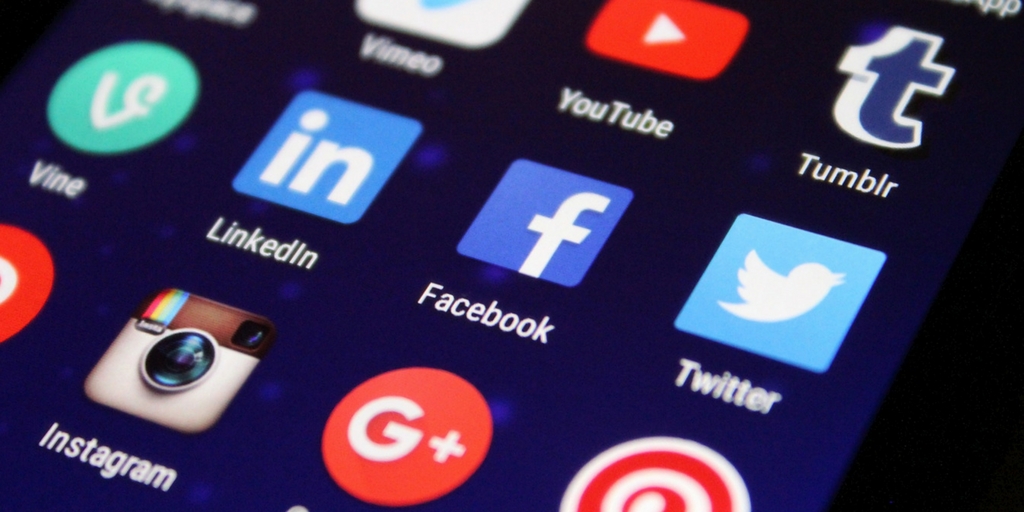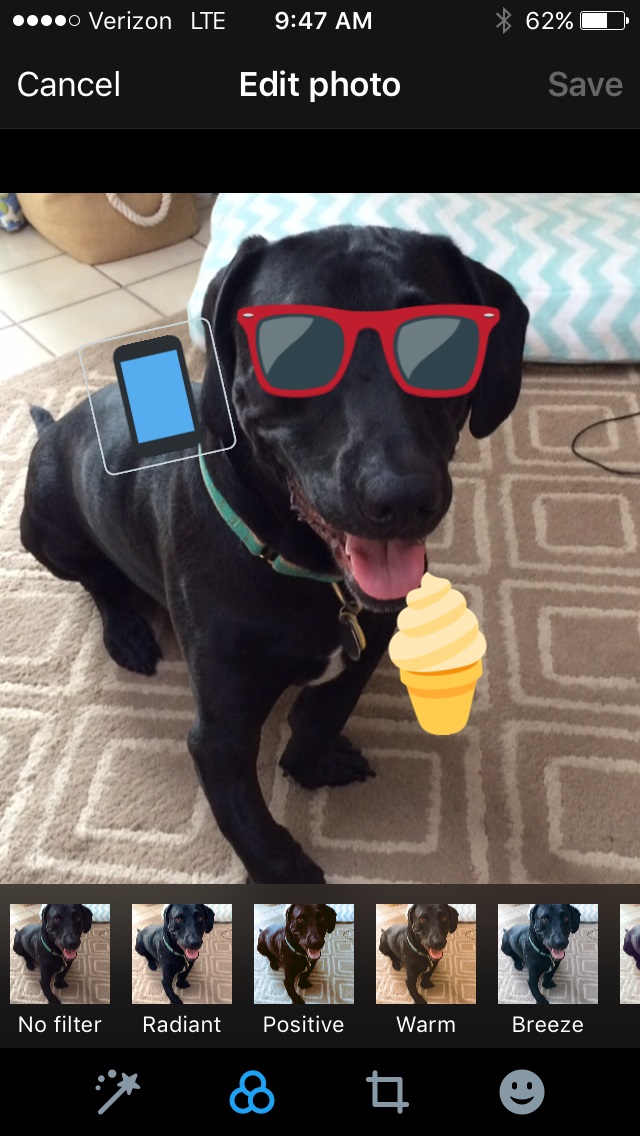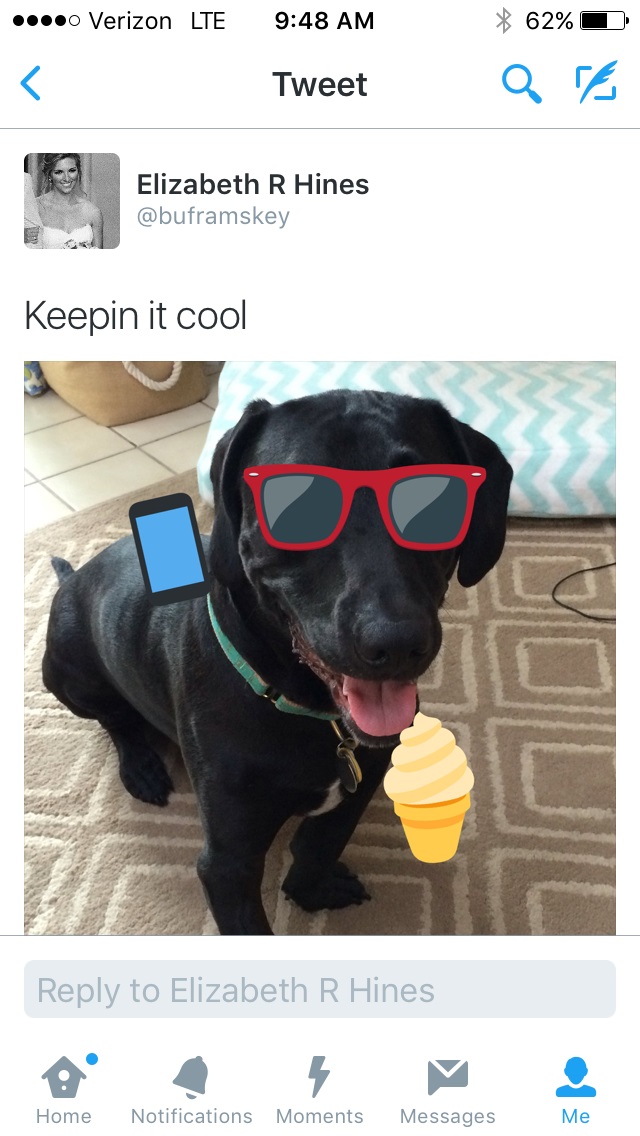
by Fronetics | Oct 4, 2016 | Blog, Content Marketing, Logistics, Marketing, Social Media, Supply Chain
This list of social media articles includes useful information for both people who rarely use social networking sites and for more advanced users.
We’ve been using this space to write about social media a lot lately. That’s partly because so many exciting new developments and enhancements keep popping up. It’s also because we can’t underscore enough how important it is for companies in the supply chain industry to participate in social media.
I thought it would be helpful to revisit some of our recent information, guides, and tips and tricks regarding social media use for B2B marketers. The following list encompasses both general, how-to-type instruction and more detailed advice for more advanced users.
I’ve segmented articles by platform and included a catch-all category at the bottom as well. Don’t see what you’re looking for? Shoot me an email to let me know what social media-related content you’d like to hear about on our blog.
LinkedIn
LinkedIn is the most popular social network for B2B companies. Here’s what you need to know to get started.
Learn about the free and paid methods LinkedIn offers to help you find and recruit new employees.
LinkedIn’s 433+ million member base presents an enormous opportunity for your company to earn new business. Start attracting those members to follow you.
Twitter
One of the top social media sites for B2B marketers, Twitter can help businesses spread brand awareness and communicate with customers.
You may find yourself frequently strapped for quality tweeting material. Here are some ideas to not only fill your feed but to keep your followers interested and engaged.
Leverage insights from Twitter’s analytics dashboard to improve audience engagement, reach, and content development.
We did an experiment to determine the ideal frequency for posting on Twitter. The resulting numbers were abysmal. But that means the experiment worked.
Add stickers to your photos on Twitter to join in on real-time conversations about trending topics and to grow your audience.
Twitter is changing its rules on the 140-character limit for your tweets. Learn what’s going to be different.
Facebook
Facebook Live offers businesses a new, creative platform for engaging customers. This article describes what marketers need to know about it and how to use it.
YouTube
YouTube is a useful engagement tool for B2B marketers who want to reach the social network’s more-than-3-billion users. Learn how to get started in this article.
Get started creating YouTube videos for your business with these easy-to-use tools and ideas for content.
Learn how to improve the reach of your YouTube videos with these strategies for distribution.
Reddit
Reddit is a gold mine for relevant, engaging content to share with your social media followers. Here’s how it works and how you can get started.
Other resources
Fronetics has developed this training specifically for business owners, marketers, and employees looking to learn more about social media and how they can contribute to their company’s success through these networks.
Fronetics has developed a comprehensive report exploring social media use in general and, specifically, within the logistics and supply chain industries.
Businesses are using social media as a strategic tool. This article explains the top three benefits companies in the logistics and supply chain industries can enjoy from participating on social platforms.
Your business should be on social media showing buyers that you know what they want and that your business can provide it.
A cross-departmental social media team can help your company get more out of social networking sites.
Participating in social media is not about earning followers; it’s about building relationships with your current and future customers.
If your social media strategy doesn’t align with your business objectives and target audience, your marketing budget is probably better spent elsewhere.

by Fronetics | Sep 19, 2016 | Blog, Content Marketing, Marketing, Social Media
Twitter is changing its rules on the 140-character limit for your tweets.
In May, Twitter announced that it planned to make changes to the types of content that count toward the platform’s 140-character limit. The social network provided no firm timeline as to when the changes would take place, but The Verge reports that September 19th is the big day.
What are the changes? And what do they mean to you?
Media attachments including photos, GIFs, videos, polls, and Quote Tweets will no longer count toward your 140-character limit. Also no longer counting toward the character limit: @names in replies.
Other changes:
- The ability to retweet and quote yourself so that you can share new insight on one of your Tweets, or share it again if you feel like it went unnoticed.
- Tweets that begin with a username will reach all your followers. This means that you will no longer need to use the awkward ”.@” convention.
Together these changes mean that you will have more flexibility in communicating via Twitter.
It isn’t clear if all the announced changes will occur simultaneously, or if they will be rolled out separately.
Related posts:


by Fronetics | Aug 23, 2016 | Blog, Content Marketing, Logistics, Marketing, Social Media, Strategy, Supply Chain

TotalTrax leverages content marketing to increase web traffic, generate high-quality leads, and, ultimately, grow business.
TotalTrax, Inc., is a provider of real-time vehicle, driver, and inventory tracking technologies for manufacturing and warehouse operations. Despite a decade of positive growth, the company knew it was missing opportunities for new business because of its lack of a clear digital strategy.
That’s why TotalTrax hired Fronetics Strategic Advisors. The firm created and implemented a multi-channel content marketing program designed to increase the company’s digital footprint and accelerate growth.
Content marketing can help a business elevate its brand position by producing content that demonstrates industry expertise, offers valuable information, and builds trust with their target audience. Example benefits include:
- Increased brand awareness
- Higher referral traffic
- Better lead generation and nurturing
- Improved customer loyalty and trust
- Decreased marketing cost and higher ROI
Fronetics evaluated TotalTrax’s existing digital assets. Leveraging extensive market research, the firm helped refine the company’s messaging and content distribution to better engage potential customers. Fronetics then implemented the customized content marketing strategy to help TotalTrax fully leverage its web presence to bring about new business.
The results
In a 24-month period, TotalTrax realized significant gains in web traffic, quality leads, and brand awareness. Key results included:
- 19% increase in overall web traffic
- 500% increase in traffic from social media
- 244 high-quality leads
- 30% net increase in new customers
To learn more about Fronetics’ strategy for TotalTrax, download the free case study below.

Related posts:

by Fronetics | Aug 15, 2016 | Blog, Content Marketing, Marketing, Social Media, Strategy

If your social media strategy doesn’t align with your business objectives and target audience, your marketing budget is probably better spent elsewhere.
Almost half of CMOs report they do not feel prepared to manage the challenges that accompany the rise of social media. Regardless marketers report that they plan to double social media spending in the next five years.
Pouring money into increasingly complex and expansive social marketing campaigns will not guarantee success, however. Instead, Keith Quesenberry, author of Social Media Strategy: Marketing and Advertising in the Consumer Revolution, suggests that marketers need to boil their social strategies down to the basics to improve results.
“They must use fundamental marketing concepts and modify them for this new two-way, consumer-empowered medium of social media,” says Quesenberry in a Harvard Business Review article. He offers these four steps for developing a basic social strategy.
1) Identify your business objectives.
Any strategy your business adopts should carefully align with your goals. Are you hoping to grow brand awareness? Generate more leads? Rebrand your business? Your social strategy should serve those objectives.
2) Listen to your target audience.
Yyou should have a thorough understanding of who your target audience is and how they use social media. After all, millennials use different platforms at different times than, say, Fortune 500 CEOs. Quesenberry suggests using analytics tools within social networks and secondary research, such as the Pew Research Internet Project, Nielsen, or Edison Research, to identify larger trends in social media use.
3) Produce engaging content.
Create the kinds of content your target audience seeks, and distribute it through the platforms on which they seek it. How-to videos on YouTube? Thought leadership on LinkedIn? Optimize the material you distribute for each channel. Use the social channels that best suit your brand message, type of content, and target audience.
4) Link marketing goals to social media KPIs.
Measure key performance indicators such as social media click-throughs to purchase (if the goal is online sales), social impressions (for brand awareness), or number of campaign-specific forms completed (for lead generation).
Related posts:

by Fronetics | Aug 4, 2016 | Blog, Content Marketing, Marketing, Social Media

Add stickers to your photos on Twitter to join in on real-time conversations about trending topics and to grow your audience.
Twitter announced at the end of June that it would be rolling out a new feature called #stickers. Twitter stickers are a visual twist on a hashtag, meaning you can add them to the photos you tweet and be connected to the community using the same sticker. Users can click a sticker to see other tweets tagged with the same image.
You can use multiple stickers (up to 25), place them anywhere on your photo, and resize and rotate them. There are hundreds to choose from, organized by categories, including:
- Accessories (e.g., hats, sunglasses)
- Smilies and people
- Animals and nature
- Food and drink
- Activity (e.g., sports equipment, instruments)
- Travel and places
- Objects
- Symbols
- Flags
Why would my business use Twitter stickers?
Twitter suggests, “Use [stickers] to share what you’re doing or how you’re feeling, to show support for a cause, or to just add some flair.” While their primary intention may be fun, Twitter stickers should pique businesses’ interest because they are searchable. And anytime something is searchable, that means it is another opportunity for potential customers to find you.
By using a sticker on one of your tweets, you increase your audience for that tweet in the same way that you do when using a hashtag. People who search by the stickers you use will see your tweets.
Imagine the potential! Medals or sports icons during the Olympics, weather stickers during extreme elements: millions of people will be using and searching these images. Find clever ways to relate Twitter stickers to your photo content, and you’ll strike a chord with an enormous audience.
Also, don’t discount the value of showing some of your brand personality through social media. Having fun with Twitter stickers can give your followers an idea of what your company is all about, show the human face behind the company name, and help them connect with you.
How do I add a sticker?
Stickers are now available to all iOS and Android users. Here’s how to add a sticker to your photo:
1) Tap the Tweet compose icon.
2) Tap the camera icon to take a photo or to select one from your camera roll.
3) Tap the sticker icon (a smiley face) on the bottom right-hand corner of the selected photo to launch a library of stickers. Say I wanted to tweet this photo of my dog:

4) Tap your selected sticker(s). Once placed on your photo, hold and drag the sticker with your finger to move to your desired position.

5) To tilt, enlarge, or shrink a sticker: Place two fingers on either side of the sticker and turn the sticker clockwise or counterclockwise to rotate, or slide your fingers apart or together to resize.
6) If you’d like to remove a sticker from a photo, press and hold on the sticker, then drag it to the bottom of your screen until the trash can icon appears.
Here is what the finished product looks like:

Related posts:

by Fronetics | Jul 26, 2016 | Blog, Content Marketing, Marketing, Social Media, Strategy

Your business should be on social media showing buyers that you know what they want and that your business can provide it.
Once again B2B buyers reported that their purchase cycle has increased since last year. That’s in part because they are scrutinizing potential vendors more closely than ever before. Buyers overwhelmingly reported spending more time conducting research (80%) and using more sources to investigate purchases (73%).
You may be surprised to learn that one of those sources is social media, more often than not. More than half (53%) of B2B buyers report turning to social media to make buying decisions. What’s more, more than a third (34%) say they are spending more time this year than last using social media to research vendors and solutions.
Social media should be a critical component of your lead generation and nurturing strategy. Your business should use these platforms to prove that you understand what buyers are expecting from your brand. The 2016 B2B Buyer’s Survey Report found that today’s B2B buyers expect:
- Timely responses to messaging: Demonstrating a timely response to questions helped make the sale 98% of the time.
- Strong knowledge of the company and its needs: Personalization ranked as the second most influential reason a buyer chooses a specific vendor. When researching potential products, 64% gravitated toward companies that demonstrated “a stronger knowledge of our company and its needs.” A whopping 84% chose a vendor that could solve one of their pain points.
- Clear demonstration of ROI: Buyers reported conducting a more detailed ROI analysis before making a purchase. Vendors who can demonstrate how customers will receive their return on investment have a clear advantage. In fact, 90% of businesses that do this make the sale, according to the study.
- Speedy and easy delivery: “Deployment time/ease of use” skyrocketed from 49% in 2015 to 83% this year, leading the ranks as one of the most important variables that can set you apart from your competition. Buyers not only want it quickly, but they want a simple and easy buying process.
Which social media platforms do B2B buyers use most in their research?
The B2B Buyer’s Survey found that buyers primarily are using three social tools to conduct their research.
- LinkedIn is reportedly the most impactful to the research process. (81% said it was very important or somewhat important.)
- Blogs came in second, with more than a third of buyers (37%) ranking it very important.
- Video sites like YouTube and Vimeo are third, with 60% of respondents ranking them very important or somewhat important.
Want your business to connect with the 2.3 billion worldwide social media users? Get Fronetics’ free social prospecting workbook to learn how to use these platforms to generate new leads and sales for your business.
Related posts:












